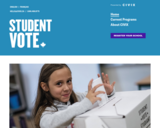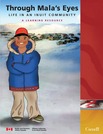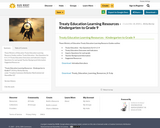
This is a resource that shows how parliament in Canada works. It outlines the different levels of government responsibility.
- Subject:
- Social Studies
- Material Type:
- GAP 5
- Homework/Assignment
- Reading
- Author:
- Concentus
- Date Added:
- 03/29/2023

This is a resource that shows how parliament in Canada works. It outlines the different levels of government responsibility.

This is a great project to do later in the year once students have practiced independent research skills. Students are put into groups, and assigned a "big idea" form the power and authority strand to research and present to the class.

This story follows Reggie as he explores the different types of technology used in the agriculture industry.

Global and Canadian Defenders for human rights have changed societal conditions and provide inspiration for students. The overall goal of Speak Truth to Power Canada is to raise student awareness that advances in human rights come through the actions of individuals.
In this lesson plan on Truth and Reconciliation you will find:
- An interview with Chief Littlechild including his biography.
- Student activities that support the theme of this lesson, including reflection activities on Chief Littlechild’s life experiences, Residential Schools in Canada, the Truth and Reconciliation’s findings and recommendations on how to move forward.
- Three brief community defender profiles to expand the lesson and encourage students to identify with a variety of defenders for human rights.
To support the lesson on Truth and Reconciliation, you will also find:
1. Sections or articles of selected legal instruments that are tied to the theme of Truth and Reconciliation.
2. A student activity that links the Moments in Time timeline of advancements and setbacks in human rights from a Canadian perspective.
You can, of course, choose to use any or all of the suggested student activities.
Warning: All student activities are applicable to Grade 5 to 12 students, with viewer discretion warning. Teachers should review the suggested resources prior to undertaking with their students.
*This set of lessons is also available in Cree.

This storybook tells the story of two young children who decide to grow a garden. Along the way, they face many of the same issues in their garden that their parents face on the farm. Together the family experiences the wonders of growing food while learning about balancing the growing food with caring for the environment.

Student Vote is an independent evaluation commissioned by Elections Canada reports that the Student Vote program is having a significant impact among students in the key areas associated with future voting, as well as increasing the engagement of families in the election.
Teach students how to be informed and engaged citizens.
Mock elections are run at all levels of government and the materials are all provided for free once you register. Bring civics to life for your students!

This series of lesson plans, built around the first-person narrative of a 12-year-old Inuk boy, will help you and your students appreciate life in the Inuit community of Salluit, in the northern part of Nunavik, Northern Quebec. Although designed for students from 9 to 12 years of age, some of the lesson plans and strategies in this unit can be adapted for other grade levels. Suggested activities and lists of research resources offer exciting and engaging opportunities to learn more about the history, customs and traditions of Inuit in Canada.
The aim of this booklet is to enhance the knowledge of students about the history, cultures and traditions of Inuit and, in particular, those who live in Canada's northern Inuit community of Salluit.
By completing the lessons in this booklet, students will be able to:
- express an appreciation for the strong traditions and unique culture of the Inuit people, in various ways
- describe the various developments that affected Canada's Arctic from its early history to the present
- locate the community of Salluit and its neighbouring Inuit municipalities on a map of Canada
- relate the similarities and differences between life in Salluit and life in their own community.
Through Mala's Eyes...Life in an Inuit Community offers educators opportunities to address provincial learning outcomes in the social studies, history and geography portions of their curriculum. Given the nature of the suggested activities, students will also address learning outcomes in language, the arts and mathematics.
*Audio recordings of student readings are available through the website, but are not hyperlinked in the pdf document.
*With some slight adaptations, this unit can be completed without technology.

These Ministry of Education Treaty Education Learning Resource Guides outline:
Treaty Education - Key Questions for K-4, 5-9
Treaty Education Outcomes and Indicators
Inquiry Questions for each grade
Teacher Background Information
Suggested Resources

The Kindergarten to Grade 9 Treaty Education Learning Resource is designed for teachers to assist them in integrating the Treaty content and perspective with Saskatchewan’s curricula and is based on the inquiry method of teaching. It provides information about Treaties, First Nations people and the history of what is now known as Saskatchewan, as well as sample learning experiences, assessment ideas and suggested resource materials to support teachers in the development of their lessons.
Resources are organized by grade and outcome.
Visit the site to download the resource.

This is a great field trip for your grade 5 class. Tours include, Chicago Connection, Passage to Fortune, and Bunker 24. This field trip aligns well to the topic of immigration.

The Museum of Natural Sciences at the U of S in Saskatoon showcases the history of Earth and the evolution of life on it through exhibits and displays that include dinosaur skeleton replicas, fossils, live animals and plants, rocks, and minerals.
Free field trips are offered over seven weeks in partnership with the USask science departments, museums and galleries, Science Outreach, and community groups. Join us for hands-on activities and tours at the Museum of Natural Sciences, in teaching laboratories, and at other campus cultural facilities.